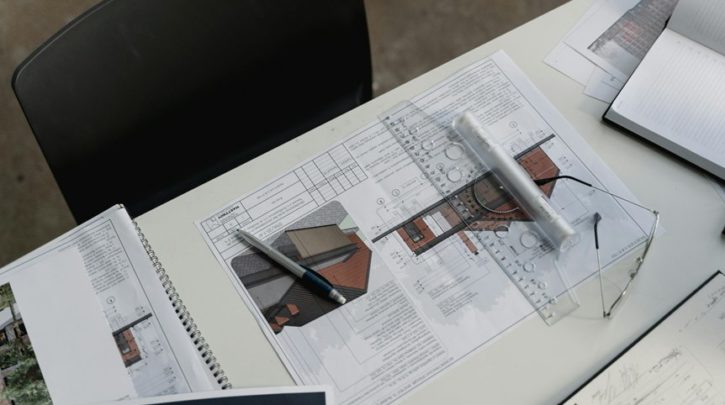When you examine an isothermal process, you’re looking at how a system maintains a constant temperature while its pressure and volume change. This steady temperature means the internal energy doesn’t fluctuate, even though work is done by or on the system. Comprehending this balance is essential for grasping how heat transfer compensates during these changes, a concept that underpins many practical applications in thermodynamics. But how exactly does this process unfold in real-world scenarios?
Understanding the Basics of Isothermal Processes
Although temperature remains constant during an isothermal process, pressure and volume can change in a way that keeps the system in thermal equilibrium with its surroundings.
You’ll observe isothermal equilibrium effects where heat exchange balances work done, ensuring internal energy stays steady.
In ideal gas behavior, this relationship follows Boyle’s Law, meaning the product of pressure and volume remains constant. As you adjust volume, pressure inversely shifts to maintain temperature.
Comprehending these basics helps you grasp how energy transfers and mechanical work interact without changing temperature, a key concept in thermodynamics that underpins many natural and engineered processes.
How Isothermal Processes Work in Practice
When you observe an isothermal process in action, such as in a piston-cylinder apparatus containing an ideal gas, you’ll notice that the temperature stays constant while the pressure and volume adjust accordingly.
This balance occurs because heat exchange compensates for work done by or on the gas, maintaining a stable temperature.
Real world examples of isothermal systems include the melting of ice and boiling of water, where temperature remains steady during phase changes.
Comprehending these practical scenarios helps you grasp how isothermal processes function beyond theory, demonstrating the constant temperature principle in everyday thermodynamic applications.
Calculating Work Done During Isothermal Changes
Comprehending how temperature remains constant in an isothermal process sets the stage for calculating the work done during such changes.
For an ideal gas, work calculations rely on the formula W = RT * ln(V2/V1), where R is the gas constant and T the absolute temperature. This formula comes from integrating pressure over volume, reflecting Boyle’s Law that pressure times volume stays constant.
You can also express work regarding pressure, using W = 2306 RT * log(P1/P2). Knowing this helps you precisely determine the work involved in expanding or compressing an ideal gas isothermally.
Heat Transfer and Energy Flow in Isothermal Systems
One key aspect of heat transfer in isothermal systems is that the temperature stays constant because the energy entering or leaving the gas balances the work done by or on it.
During expansion, heat transfer occurs as the gas absorbs energy, allowing it to perform work without changing temperature. Conversely, during compression, the gas releases heat to the surroundings, preventing temperature rise despite increasing pressure.
This energy flow maintains internal energy at zero change, so work done equals heat transferred. Comprehending this balance clarifies how isothermal processes manage heat transfer and energy flow to sustain constant temperature conditions.
Practical Applications and Importance of Isothermal Processes
Because isothermal processes keep temperature constant while allowing energy transfer, they play an essential role in many practical applications.
In refrigeration cycles, they absorb heat from surroundings, maintaining the low temperatures needed for cooling. You’ll also find isothermal compression in engines, where it helps enhance engine efficiency by reducing energy loss during compression.
Comprehending these processes lets you predict gas behavior using Boyle’s Law, aiding pneumatic system design.
Additionally, isothermal processes are vital for optimizing thermal management in industries, improving energy efficiency and cutting operational costs. This knowledge supports practical and efficient engineering solutions across various fields.
Frequently Asked Questions
How Do Isothermal Processes Differ From Adiabatic Processes?
You’ll find isothermal processes keep temperature constant by exchanging heat, while adiabatic processes don’t exchange heat, causing temperature changes. So, isothermal processes balance heat, and adiabatic ones isolate the system thermally.
What Materials Are Ideal for Conducting Isothermal Experiments?
You’ll want ideal conductors like copper or aluminum for your experimental setups because they transfer heat efficiently, helping maintain constant temperature during isothermal experiments and ensuring accurate, reliable results throughout the process.
Can Isothermal Processes Occur in Real-World Non-Ideal Gases?
Yes, you can observe isothermal processes in real world behavior of non ideal gases, but you’ll notice deviations from ideal models due to intermolecular forces and volume, requiring adjustments to accurately describe their thermodynamic changes.
How Does Entropy Change During an Isothermal Process?
During an isothermal process, you see entropy change because heat transfers keep the system in thermal equilibrium. Your entropy calculations show it increases when heat enters and decreases when heat leaves the system at constant temperature.
What Historical Figures Contributed to the Development of Isothermal Concepts?
You’ll appreciate that Sadi Carnot developed the Carnot cycle, linking isothermal processes to efficiency. Boyle’s law laid groundwork, while Clausius stated thermodynamics laws, and Lord Kelvin introduced the Kelvin temperature scale essential for your comprehension.
Christina Pulluck helped bring Nebula Electronics from a a science and tech decision forum to a full-fledged news site by creating a new design and branding. She continues to assist in keeping the site responsive and well organized for the readers. As a contributor to Nebula Electronics, Christina mainly covers mobile news and gadgets.







